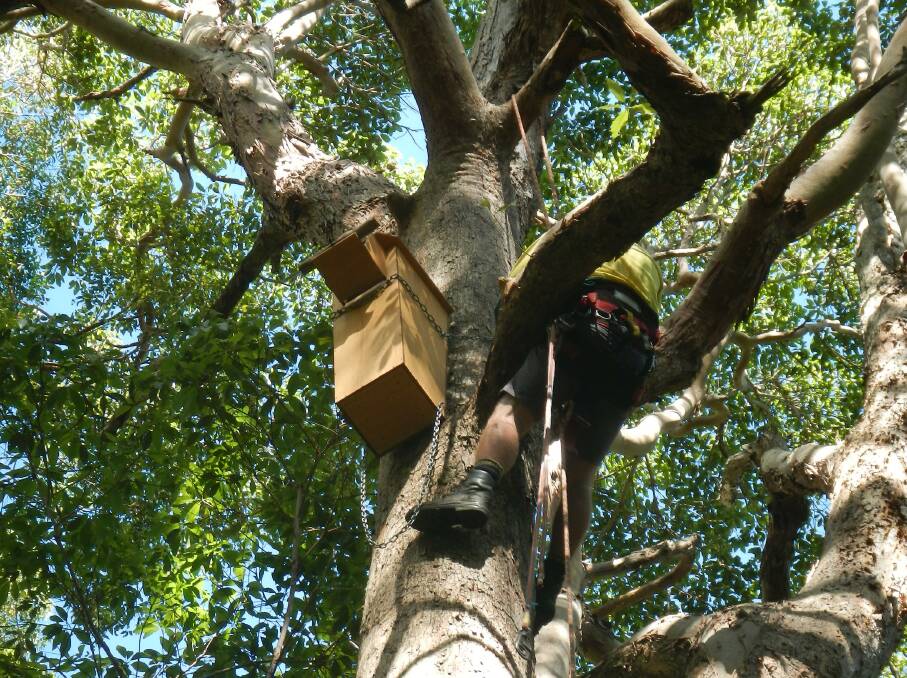
MidCoast Council's Natural Systems team is concentrating on easing habitat squeeze for our furry and feathered friends as our urban areas grow, most recently at Smiths Lake.
Subscribe now for unlimited access.
$0/
(min cost $0)
or signup to continue reading
Council says in leafy towns and villages, the loss of trees is an inevitable consequence of the construction of new homes.
Its Natural Systems team is working to preserve the unique character of the bushland village of Smiths Lake, and also to encourage native Australian animals to stay put and cohabit with the humans.
"Smiths Lake is a very popular location for new home construction, with natural bushland reserves, leafy streets and a beautiful lakeside location. In order to retain the special appeal of the village, it's necessary to work with new development to minimise the removal of native trees and promote landscaping and native amenity in new developments," council's senior ecologist, Mat Bell said.
One of the problems faced is that the largest, oldest trees often contain nesting hollows for gliders, owls, micro-bats, possums and rosellas. These large trees are often necessary to remove when building development is taking place.
MidCoast Council is working with local developers, builders and home owners to minimise the impact of habitat-squeeze on our native wildlife.
"There are three steps we're taking to assist both human and native animals to live side by side in Smiths Lake," Mat Bell said.
Firstly, if the tree can be safely retained, then protections for that tree are put into place - this is the first and best priority.
"Then, if hollows have to be removed, we're replacing them with artificial nesting boxes so that local native fauna are not displaced" explains Mat.
"Finally, we are ensuring that an ecologist is present during the removal of hollow trees to provide appropriate care for any wildlife displaced during the felling process. This three-pronged approach is the best practice for hollow-tree removal."
Over the last couple of months, local landholders who removed hollow trees for their construction have provided 42 artificial nesting boxes in Council public reserves close to their development.
Peter Goonan, council's environmental officer, has been responsible for much of the installation work for the boxes and monitors the new residents as they move in.
He's also worked closely with professional tree climber, Peter Hamilton to install the larger owl nesting boxes successfully.
"It's a good feeling for landholders and for us, putting in boxes for native wildlife. Native animals, like gliders, possums and owls readily find and inhabit nesting boxes wherever we have installed them in the past," Peter said.
"We've put in 37 possum and glider boxes, three micro-bat boxes and two owl boxes.
"We will be monitoring the new homes closely. Hopefully, we get to see native wildlife utilising the homes we've provided for them."

